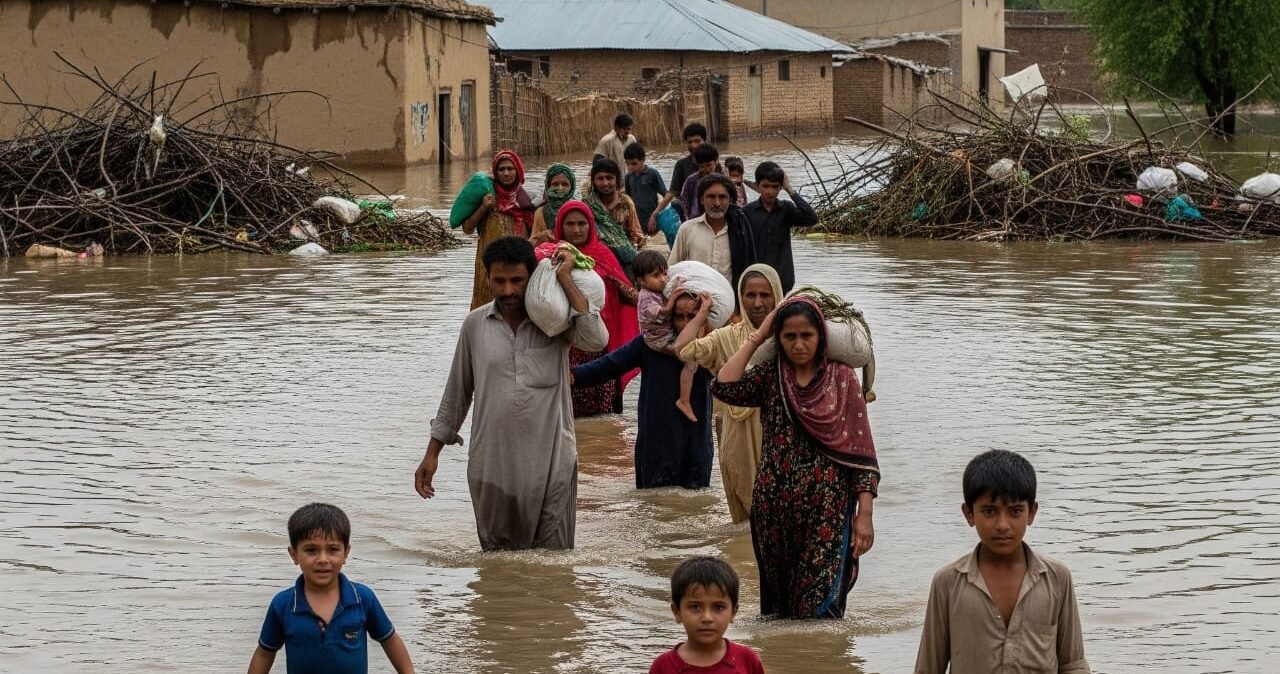A Lifeline for Flood-Hit Communities
In a heartwarming show of solidarity, the European Union (EU) has stepped up with a generous Rs350 million (€1.05 million) emergency aid package for Pakistan’s flood victims, announced on September 2, 2025. The EU Aid for Pakistan Floods aims to provide life-saving support to communities battered by devastating monsoon floods that have claimed hundreds of lives and displaced thousands across Punjab, Khyber Pakhtunkhwa (KP), and Gilgit-Baltistan. This timely pledge is a beacon of hope as Pakistan grapples with one of its worst natural disasters in decades.
The EU Aid for Pakistan Floods news has sparked gratitude across social media, with Pakistanis praising the EU’s swift response. As rescue efforts continue, this aid is set to make a real difference. Here’s the full story on the EU Aid for Pakistan Floods, its impact, and what it means for the nation’s recovery.
What Sparked the EU Aid for Pakistan Floods?
The EU Aid for Pakistan Floods was announced on September 2, 2025, in response to catastrophic flash floods triggered by intense monsoon rains and water releases from India’s dams, which swelled rivers like the Chenab, Ravi, and Sutlej. The floods, starting in late June, have killed at least 819 people, injured over 1,100, and left many missing, per the National Disaster Management Authority (NDMA). The EU Aid for Pakistan Floods, equivalent to €1.05 million, will be channeled through trusted humanitarian organizations to deliver urgent relief.
The aid package focuses on three key areas: life-saving health services, water, sanitation, and hygiene (WASH) support to prevent disease outbreaks, and cash assistance for the most vulnerable families. EU Vice President Josep Borrell spoke with Pakistan’s Deputy Prime Minister and Foreign Minister Ishaq Dar, expressing condolences and reaffirming the EU’s commitment. The EU Aid for Pakistan Floods builds on previous support, like the €30 million pledged in 2022, showing a continued partnership in crisis.
Why This Matters
The EU Aid for Pakistan Floods is a critical lifeline for a nation reeling from nature’s fury. Pakistan, despite contributing less than 1% to global emissions, faces severe climate-driven disasters, with the 2022 floods causing $30 billion in damages. The EU Aid for Pakistan Floods addresses immediate needs in flood-hit areas like Narowal, Wazirabad, and Jhang, where 760,424 people have been evacuated and 565,000 acres of crops destroyed, per NDMA reports. This support will help families access medical care, clean water, and financial aid to rebuild their lives.
READ NEXT: Pakistan Exports Plunge 10% in August, Trade Deficit Hits $2.86B
The pledge also strengthens Pak-EU ties, with Ishaq Dar thanking the EU for its solidarity. The EU Aid for Pakistan Floods highlights global responsibility to support climate-vulnerable nations, especially as Pakistan battles economic challenges like a $2.86 billion trade deficit in August 2025. By aiding the most vulnerable, the EU Aid for Pakistan Floods fosters hope and resilience, showing that international support can make a tangible difference.
Public Reaction and Social Media Buzz
The EU Aid for Pakistan Floods announcement lit up social media on September 2, 2025. X posts from Lahore to Islamabad buzzed with gratitude, with one user writing, “EU Aid for Pakistan Floods is a game-changer thank you!” Another shared, “Rs350m for our flood victims? EU’s got our back!” Viral images of flooded villages underscored the urgency, with hashtags like #EUAidPakistan trending briefly. A post from Sialkot read, “This aid will save lives!”
Pakistanis expressed hope, with one X user noting, “EU Aid for Pakistan Floods shows the world cares—let’s rebuild together.” Some called for transparency, urging, “Make sure this aid reaches the needy!” The buzz reflects the emotional impact of the EU Aid for Pakistan Floods, uniting communities in gratitude while highlighting the scale of the crisis, with stories like the heroic mother’s sacrifice in Wazirabad resonating deeply.
Challenges Amid the Relief Efforts
The EU Aid for Pakistan Floods faces significant hurdles. Distributing aid in flood-hit areas is a logistical nightmare, with roads and bridges washed away in Punjab and KP. The NDMA reported 506 relief camps housing 10,654 people, but reaching remote villages like those in Narowal remains tough due to ongoing rains, forecast until September 3, 2025. Ensuring the EU Aid for Pakistan Floods reaches the most vulnerable requires coordination between humanitarian partners and local authorities.
Health risks are another challenge. Contaminated floodwaters threaten disease outbreaks, making WASH support critical. The EU Aid for Pakistan Floods must also navigate Pakistan’s strained resources, with economic pressures from a 10% export plunge adding complexity. Ensuring transparency and accountability in aid delivery is crucial, as past relief efforts have faced criticism for mismanagement. These challenges test the effectiveness of the EU Aid for Pakistan Floods.
A Glimmer of Hope
Despite the obstacles, the EU Aid for Pakistan Floods is a ray of light. The aid will provide immediate relief, with cash assistance helping families buy essentials and health services saving lives. Stories of resilience, like the 20-day-old baby girl rescued from the Sutlej River and wildlife rangers saving eight deer, add to the hope sparked by the EU Aid for Pakistan Floods. Volunteers in Lahore are mobilizing to support relief camps, showing community spirit.
The EU’s pledge follows other international efforts, like the ADB’s $3 million grant, amplifying the impact. Communities are rallying, with mosques in Narowal holding prayers for flood victims. The EU Aid for Pakistan Floods inspires unity, reminding Pakistanis that they’re not alone. This support, combined with local efforts like Rescue 1122’s 2,311 rescues, fuels optimism for recovery.
What’s Next for Pakistan’s Flood Recovery?
The EU Aid for Pakistan Floods sets the stage for urgent relief. Humanitarian partners are deploying resources, with health teams setting up mobile clinics and WASH programs rolling out to prevent disease. The NDMA has issued alerts for the Chenab and Ravi rivers, urging residents to stay safe as water levels remain high. Long-term plans, backed by international aid, aim to rebuild flood-resilient infrastructure to prevent future disasters.
Pakistanis are urged to support relief efforts and follow NDMA updates for safety guidelines. The EU Aid for Pakistan Floods is a call to action for global solidarity, as Pakistan rebuilds amid economic and environmental challenges. As communities come together, this aid offers a path to recovery. Stay tuned for updates on the EU Aid for Pakistan Floods and Pakistan’s journey forward.



